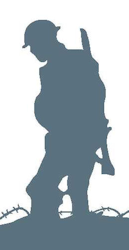Name
Walter Edward Carter
Conflict
First World War
Date of Death / Age
Rank, Service Number & Service Details
Trooper
1647
Royal Horse Guards
Awards: Service Medals/Honour Awards
Cemetery/Memorial: Name/Reference/Country
Headstone Inscription
Not Researched
UK & Other Memorials
Pirton School Memorial
Biography
Walter appears on the School War Memorial, confirming that he attended the school. Parish records suggest only one man of this name who could have served, and he was born circa 1885 to Charles and Eliza Carter. Charles had been the village policeman and then the School Attendance Officer. Walter was born in Datchworth, Hertfordshire and would have been about twenty-nine at the outbreak of war. In all it would appear that four brothers served and survived - refer to Alfred Carter for more family details.
Walter was found in several reports; in the Parish Magazine of September 1914 and recorded as being in the Army Reserve; in the Hertfordshire Express of November 11th 1914 and serving in the Royal Horse Guards (this entry also reports him as wounded on the October 30th) and in the Parish Magazine of September 1915 as enlisting during 1914, but after July, and in the North Herts Mail of February 4th 1915. The latter provides most of the following information.
He had been a policeman, but had been invalided out eleven years earlier - he would have only been about nineteen so perhaps the paper has confused this fact with Walter’s father who had been the village policeman. When war broke out he was working as a clerk at Lacre in Letchworth and immediately volunteered for service, becoming Trooper W E Carter 1647, Royal Horse Guards. The report suggests that he had served with them before. The Regiment went to Belgium in September and the details were reported as ‘being among the last contingent that were able to land at Zeebrugge, which place was shortly afterwards knocked to pieces by the Germans, who overran that district. Needless to say it was hot work, for they were in the thick of the artillery fire, the Guards covering the retreat of the Belgians from Antwerp. After that the Guards went to Ypres district, and held the line for the British to advance again after the memorable retreat from Mons. Thus, this crack regiment of the Household cavalry was among the units that helped to bring about the turning point of the battle, namely the advance from near Paris. When his contingent of the Guards, the second to go out, arrived, the Uhlans were scattered all over the North of Belgium, and it was their job to chase them and lay them by the heels. We know how gallantly the Guards did this. Afterwards the Guards had to go in the trenches – probably the first time in history that English cavalry have had to do this. It was a noble part they played, because at that time England was rather short of infantry at the Front.'
It continues and explains the wound he received on October 30th 1914 ‘They had been relieved from the trenches that morning, and his squadron were with the first line of baggage columns behind the firing line. The Germans were shelling the transport, and some men of the 11th Hussars got knocked over. He had gone to the assistance of a wounded Hussar when he was laid out by a portion of bursting shrapnel which went between the two bones of his right leg, near the shin. So severe was the artillery fire that he had to lay nearly seven hours before the ambulance could attend to him. The following morning the Germans began to shell the hospital at Ypres, and the whole of the patients had to be moved to a convent, including himself. The day after he and other wounded left for Boulogne the railway line was being shelled by the Germans. He was in hospital at Boulogne till November 9th, when he was brought to England, having since been in hospital (Northern) at Leeds.’ By February 4th he had been home from hospital recovering for two or three weeks. He was making steady progress and hoped ‘to be quite fit and well enough to have another smack at the Germans.’
In December 1915 he was back in Pirton for his sister’s wedding on the 27th, when Annie Priscilla Carter married Frederick William Brooks. Frederick also served and survived. Walter was wearing hospital blue so presumably he had been wounded again.
Walter Carter is mentioned in the Kelly trade directory of 1926 as a builder and carpenter, located in The Old Post Office, Little Green, so this seems to have been his work after the war.
Acknowledgments
Text from the book ‘The Pride of Pirton’ by Jonty Wild, Tony French & Chris Ryan used with author's permission



